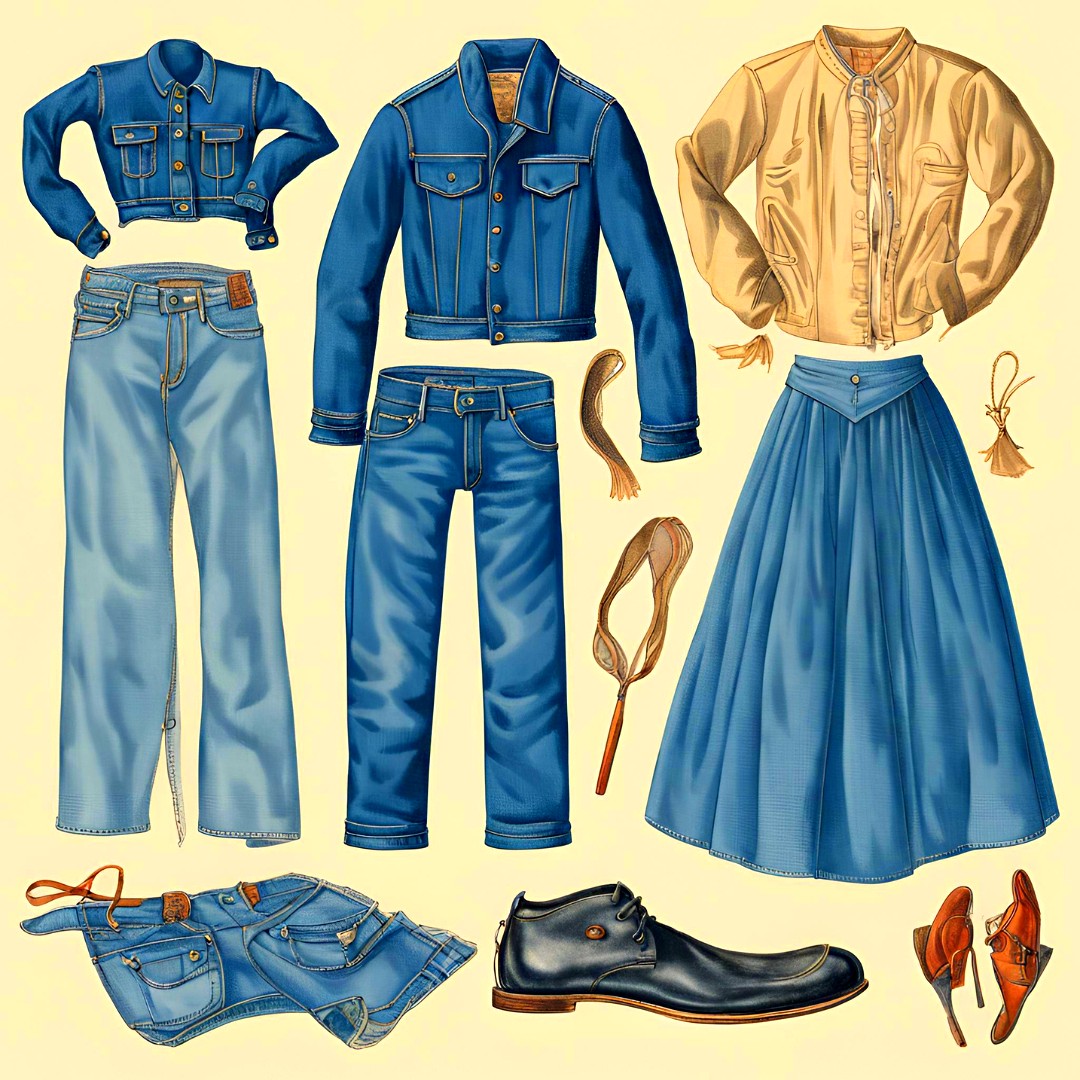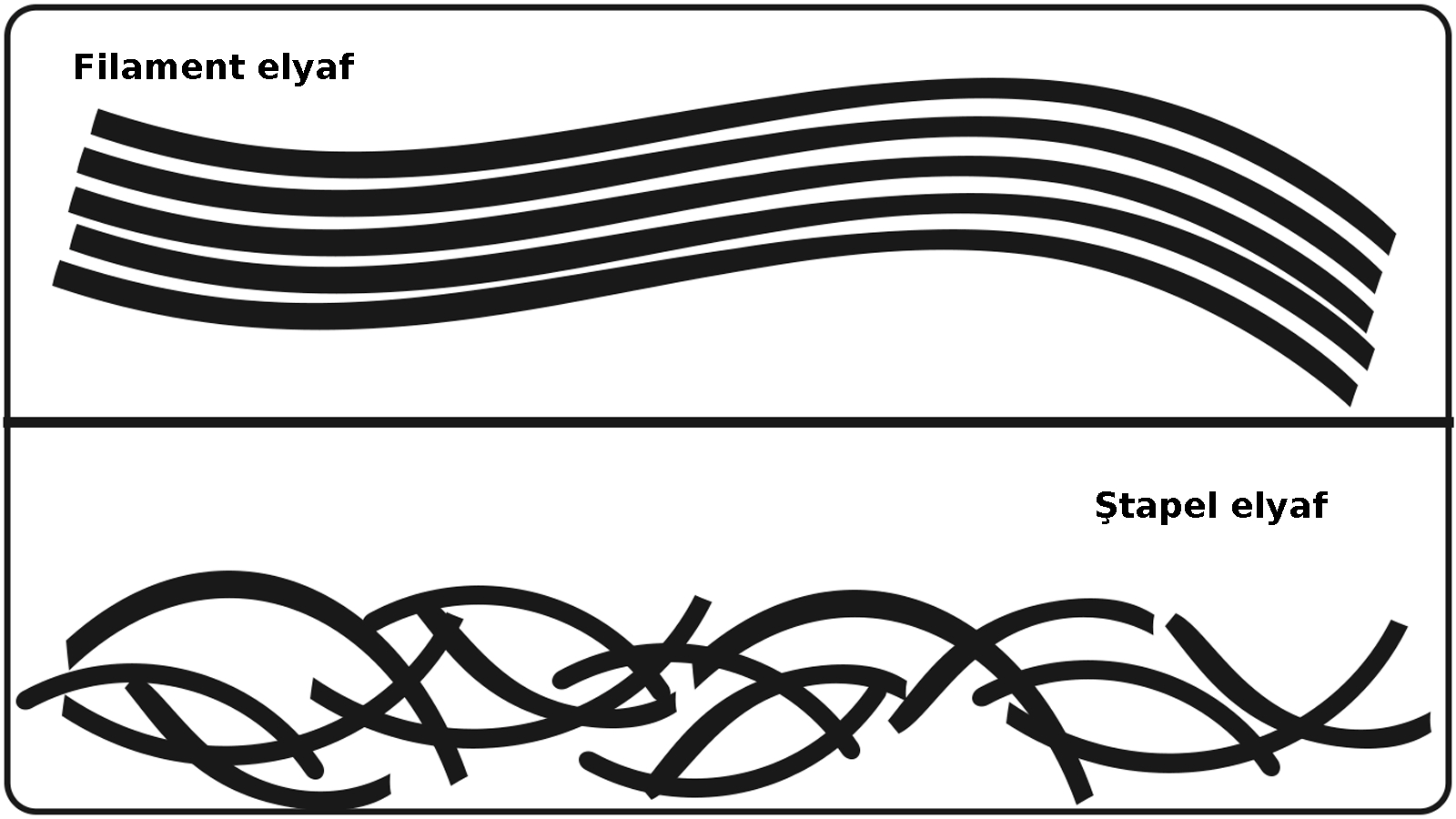Yarn Count, Yarn Numbering Systems and Conversions
22:34
0 comments
Yarn numbering is a term used to describe a yarn's physical size or, more specifically, its linear density. Since short-staple spun yarns, like those containing cotton, can vary greatly in their bulk, measuring a yarn’s diameter, in a consistent way, can be almost impossible. For this reason, it is necessary to employ a more precise way of describing a yarn’s physical size.
Direct Yarn Numbering System
A yarn numbering method in which the numerical value describes the weight to length ratio; like denier, the larger the yarn number, the thicker or heavier the filament or yarn. There are two main methods for assigning a yarn number. One method is called the direct yarn numbering system. In this method, the yarn’s linear density is denoted as a weight-to-length ratio. This method is commonly used for synthetic or man-made fiber. For example, a 70 denier yarn means that there are 70 grams per 9000 meters. Denier is just one of the direct yarn numbering units but it is one of the more common direct units used for synthetics. Here are some others:
Direct Yarn Numbering Units:
Decitex = weight in grams/ 10,000 m
Tex = weight in grams/1,000 m
Denier = weight in grams/9,000 m
Indirect Method
A yarn numbering method in which the numerical value describes the length to weight ratio. Like cotton count (Ne), the higher the number the finer or lighter the yarn. The other method for describing a yarn’s linear density is called the indirect method. In this method, the yarn’s size is described in length to weight units. For cotton yarn, it is typical to see the denotations Ncc or sometimes Ne. These denotations are otherwise known as cotton count or number English. For example, a Ne 30/1 100 % cotton or blend. Yarn means 30 times 840 yards per pound. 840 yards is known as a hank. There are also some other indirect units.
Worsted Count = number of 560 yard lengths / Pound
Woolen Run = number of 1600 yard lengths / Pound
Woolen Cut = number of 300 yard lengths / Pound
Number Metric (Nm) = number of 1000 meter lengths / Kilogram
With all this said it is important to realize that there are other yarn numbering units that may be encountered. It is impossible to cover all of them. This is especially true in China and some other foreign countries where many variations of yarn numbering may have evolved. Be aware that not everyone speaks or even knows all of these terms and their relationships.
Cotton Count
A numerical designation indicating the number of 840 yard lengths of yarn in one pound.
English Cotton Count
Also referred to as Ne or Number English. An indirect method of expressing the size of a cotton yarn (as the number increases, the physical yarn size decreases). It is the number of times the length of one pound of yarn can be divided by 840. Therefore, a 6/1 Ne yarn would have 5,040 yards in one pound of yarn.
Common Conversions
It is possible and often necessary to convert between the different yarn numbering systems in order to better communicate with your yarn supplier. Some common conversions include:
Nm ÷ 1.69 = Ne
5315 ÷ Denier = Ne
590.6 ÷ Tex = Ne
Denier ÷ 9 = Tex
Decitex ÷ 10 = Tex
Nw ÷ 1.5 = Ne
The above counts all represent ways to describe short-staple spun yarns. Short staple spun yarns can be made up of natural fibers which naturally grow to a staple length (such as cotton), synthetic filament fibers which have been cut to a staple length, or a blend of the two.
When describing yarns made up of filaments that have not been cut to a staple length, a yarn numbering system like this may be used:
» 2/150/34/1.25S/SB
- The first number represents the number of filament yarns plied together (in this case 2 filament yarns are plied together).
- The second number represents the linear density of each filament yarn in the ply (in this case each individual yarn has a size of 150 deniers).
- The third number represents the number of filaments in each filament yarn (in this case each yarn has 34 filaments).
- The fourth number represents the twist of the ply (in this case the ply twist is 1.25 turns per inch) and the direction of the ply (in this case the yarn is plied in the "S" direction).
- The fifth group of letters may represent the fiber luster (in this case the luster is Semi-Bright).
-
Ayakkabılarda doğru numara seçimi sağlık ve kullanım ömrü açısından önem arz eder. Kesirli Ayakkabı Numaraları Ne Anlama Geliyor? 🤔 Bazı a...
-
İş sağlığı ve güvenliği için bazı işletmelerde pr ayakkabı kullanımı gereklidir. Ayakkabılarda rastladığımız "PR" terimi, İngiliz...
-
Rahat bir kullanım için ayağın genişliği ve uzunluğuna uygun ayakkabıyı seçmek son derece önemlidir. Ayakkabı Genişlik Terimleri: E, F, FX,...
-
Yeşil renk ve tonları, sarı ile mavi ışığın birleşmesi sonucu oluşur ve fotosentetik pigmentler nedeniyle bitki yapraklarında yaygın olarak ...
-
Türk tekstil ve hazır giyim sektörü: yerli markaların yükselişi. Türkiye'nin lokomotif sektörlerinden biri olan tekstil ve hazır giyim...
-
Kumaşın ön yüzünün ve arka yüzünün gösterimi. Kumaş yüzü (Alm. Stoffvorderseite, Fr. front de tissue, İng. fabric face; face of fab...
-
Lif kısaltmaları tekstilde elbise üretiminin her aşamasında kullanılır. Tekstil, Kumaş, Lif ve Elyaf Kısaltmaları : Tekstil endüstrisi, lif...
-
Mavi polycotton nevresim takımı. Polycotton , polyester ile pamuğu (cotton) karıştırarak elde edilen, her iki elyafın en iyi performans ...
-
Vorteks iplik üretim aşamaları gösterimi. Vorteks (vortex) eğirme sistemi temel olarak bir çekim sistemi ve bahsedilen çekim sisteminin de...
-
Türk ayakkabı markaları, yerli ham maddeyi mükemmel işçilik ve estetik tasarımlarla birleştiriyor. Türk malı ayakkabı ürünler, kalitesi ve e...
-
Türk tekstil ve hazır giyim sektörü: yerli markaların yükselişi. Türkiye'nin lokomotif sektörlerinden biri olan tekstil ve hazır giyim...
-
Akrilik elyaf, iyi yalıtım özelliğine sahip olmasıyla öne çıkan sentetik bir lif türüdür. Akrilik Elyaf: Tanım ve Özellikler Akrilik, ( Alm....
-
Kumaş numunesi. 1) Yapılarına göre (nasıl yapıldıysa o ismi alır) a) Dokunmamış kumaşlar - Nonwoven , keçeler, kağıt telalar, elyaf, vi...
-
Ünlü Türk modacı ve tasarımcılarının kreasyonları artık dünya moda başkentlerinde sergileniyor. Türkiye'de tekstil ve moda sektörünü...
-
Farklı renk ve türdeki kumaş çeşitleri. Kumaş, ipliklerin, çeşitli yöntemlerle bir araya getirilerek oluşturduğu kaplayıcı yüzeylerd...
-
Türk ayakkabı markaları, yerli ham maddeyi mükemmel işçilik ve estetik tasarımlarla birleştiriyor. Türk malı ayakkabı ürünler, kalitesi ve e...
-
Dünyanın en meşhur modacıları. Dünyaca ünlü modacılar Her sezon önce podyumları sonra da vitrinleri süsleyen özel koleksiyonların arkas...
-
Lif kısaltmaları tekstilde elbise üretiminin her aşamasında kullanılır. Tekstil, Kumaş, Lif ve Elyaf Kısaltmaları : Tekstil endüstrisi, lif...
-
Naylon olarak da bilinen polyamid kumaşlar sentetik kökenli bir kumaş türüdür. Polyamid ya da naylon (Alm. Polyamidfaser, Fr. fibre ...
-
Tekstil ürünlerinin etiketlerinde yıkama, kurutma ve ütüleme ile ilgili semboller bulunur. Tekstil Ürünleri için Tavsiye Edilen Yıkama Tali...


















































































































0 yorum:
Yorum Gönder
Merhaba, daha kaliteli bir site için yorumlarınızı bekliyoruz.